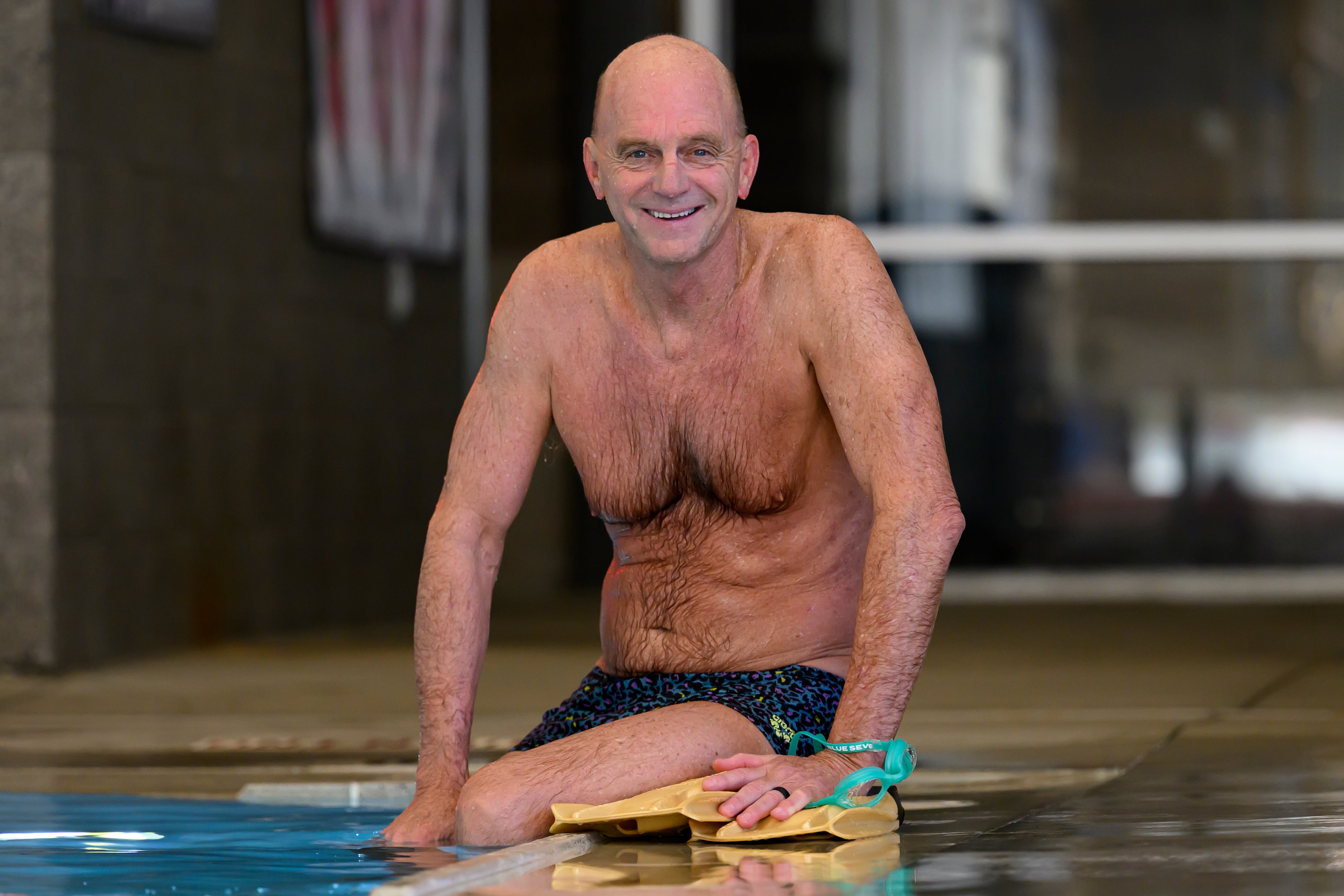Olympic gold medallist Rowdy Gaines, widely recognised as the “voice of swimming” for his insightful commentary on NBC, is now sharing his expertise to encourage older individuals and those returning to the water after a long hiatus.
Swimming stands out as a comprehensive, low-impact exercise, offering a full-body workout suitable for all ages.
Gaines, a three-time gold medallist from the 1984 Los Angeles Games, firmly believes in its unique advantages. “Of course I’m biased, but I will stack swimming against any other exercise out there, especially as we age,” Gaines told The Associated Press. “And swimming is one of the few sports you can do forever.”
Gaines, who set 10 world records between 1978 and 1984 and was a key figure in American sprinting, missed the 1980 Moscow Olympics due to the US boycott.
Now 66, Gaines says that his 90-year-old father, Buddy, who is preparing for an upcoming meet for older swimmers, having not swum seriously for perhaps 70 years. Gaines’ tips steer clear of complex stroke mechanics or detailed training plans, instead focusing on practical advice for those returning to the pool after decades.
Defog your goggles, slip into the pool, grab your kickboard and let’s get motivated.
Mastering Your Technique
Prioritising proper technique is crucial. While most recreational swimmers favour freestyle (front crawl), Gaines’ advice extends to breaststroke, backstroke, and butterfly. For freestyle, he advocates for long, smooth strokes over short, choppy ones, emphasising keeping the head aligned with the body in the water.
“Water rewards efficiency,” explained Gaines, who secured his three gold medals in the 100 free and two relays. “It has nothing to do with power. I think a lot of first-timers feel like they have to power their way through the water and that is not true.”
Embrace Patience
Building distance and endurance must be a gradual process. While you might have once swum non-stop for 30 minutes decades ago, that won’t be the case after a long break. Begin with a modest 200-yard (or metre) workout. Swim 25 yards (or metres), then rest until your heart rate recovers. Repeat this eight to 10 times, then, as Gaines advises, “get the heck out of the pool.” He cautions against overdoing it initially, which can lead to frustration.

“You don’t want to overdo it to start with and then get frustrated and think you can’t do it,” he said. “You need to increase your total distance little by little.” The ideal goal is a 20-30 minute workout, three times weekly, as consistency is vital for developing a feel for the water. “Three days a week is the sweet spot,” he noted. “If you are doing less than three days a week, it’s really tough to develop the consistency you need.”
Preventing Injuries
Common sense dictates a proper warm-up. This should ideally be done on dry land before entering the water, incorporating stretches, shoulder exercises, and some strength training. Shoulder pain is a common complaint among swimmers, making it essential to differentiate between pain and fatigue. “You have to listen to any pain,” Gaines stressed. “Pain is a lot different than fatigue or strain. Pain is real. If you are feeling fatigue and strain, that’s good. If you are feeling pain, that’s bad.” If discomfort arises, stop and modify your routine. For freestyle swimmers, Gaines suggests integrating backstroke to loosen shoulders and build strength, noting that breaststroke is also gentler on the shoulders, unlike the demanding butterfly.
The Mental Game
Gaines places significant emphasis on keeping swimming enjoyable and fostering comfort in the water, rather than fighting it. “Learn to feel the water,” he advised. “The small goal of just feeling the water is much more important than many other things. Swimming is not easy. You are not always going to feel good swimming. But you are going to feel great when you’re done.” He also advocates for varying workouts – in terms of time, distance, and strokes – to maintain interest and engagement.
Hydration and Training Aids
Swimmers must remain hydrated, even though it’s less of an issue for recreational swimmers. Perspiration occurs in the water, and warmer pools (around 80 degrees F or 27 degrees C is ideal) can exacerbating dehydration. Gaines also recommends using training aids such as swim fins, paddles, or pull-buoys to add variety to sessions. “I really don’t like to swim, but I love the feeling of being done,” Gaines admitted, a surprising revelation from an Olympic champion. “I crave that feeling when I get out of the water. It’s the endorphins. It’s definitely mental for me.”

Gaines himself swims six days a week, covering 2,000 to 2,500 yards (or metres), with a varied routine of freestyle, backstroke, breaststroke, and kicking. He believes variety is key for recreational swimmers, as “swimming can be boring.” However, he concludes, “swimming can almost be meditation, even for that three-day a week, recreational swimmer.”


